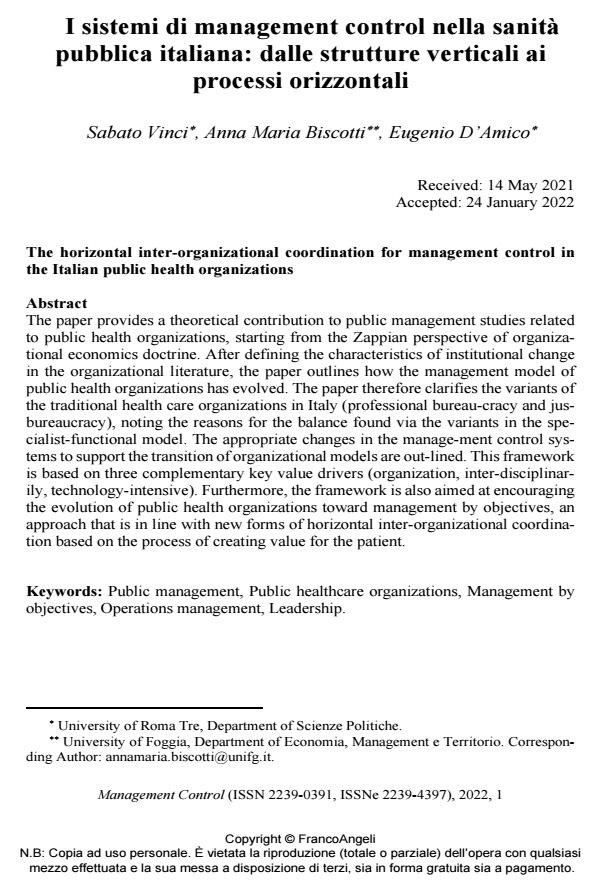The horizontal inter-organizational coordination for management control in the Italian public health organizations
Journal title MANAGEMENT CONTROL
Author/s Sabato Vinci, Anna Maria Biscotti, Eugenio D’Amico
Publishing Year 2022 Issue 2022/1
Language Italian Pages 17 P. 103-119 File size 356 KB
DOI 10.3280/MACO2022-001007
DOI is like a bar code for intellectual property: to have more infomation
click here
Below, you can see the article first page
If you want to buy this article in PDF format, you can do it, following the instructions to buy download credits

FrancoAngeli is member of Publishers International Linking Association, Inc (PILA), a not-for-profit association which run the CrossRef service enabling links to and from online scholarly content.
The paper provides a theoretical contribution to public management studies related to public health organizations, starting from the Zappian perspective of organizational economics doctrine. After defining the characteristics of institutional change in the organizational literature, the paper outlines how the management model of public health organizations has evolved. The paper therefore clarifies the variants of the traditional health care organizations in Italy (professional bureaucracy and jus-bureaucracy), noting the reasons for the balance found via the variants in the specialist-functional model. The appropriate changes in the management control systems to support the transition of organizational models are outlined. This framework is based on three complementary key value drivers (organization, interdisciplinarily, technology-intensive). Furthermore, the framework is also aimed at encouraging the evolution of public health organizations toward management by objectives, an approach that is in line with new forms of horizontal interorganizational coordination based on the process of creating value for the patient.
Keywords: Public management, Public healthcare organizations, Management by objectives, Operations management, Leadership
- Dalla misurazione dell'outcome a quella dell'impact: la Sentiment Analysis a supporto della valutazione della performance delle aziende sanitarie pubbliche Christian Di Falco, Guido Noto, Gustavo Barresi, in MANAGEMENT CONTROL 2/2025 pp.157
DOI: 10.3280/MACO2025-002008
Sabato Vinci, Anna Maria Biscotti, Eugenio D’Amico, I sistemi di management control nella sanità pubblica italiana: dalle strutture verticali ai processi orizzontali in "MANAGEMENT CONTROL" 1/2022, pp 103-119, DOI: 10.3280/MACO2022-001007